1930 - 1935: Reaching for the Skies
While vacationing on a nice Mediterranean beach, Quintillus received a telegram requesting an urgent return to New Galway - no candidates had filed for election, and with Smellincoffee leaving town for a more southern locale, a mayor was needed. Why couldn't Moe Biehl or Karen Frawl run things, Quintillus wondered. But New Galway would have its mayor.
Upon surveying the landscape, it was clear the city had been growing. A nice new museum and library district, the military base, power lines, and a healthy surplus. A few minor issues were noticed, but all said, things were running smoothly. The main issue was more people wanted to move in.
But Quintillus also heard about the desire for a central commercial district, and was intrigued by the idea. With power already reaching all three of New Galway's landmasses, it was time to lay the groundwork for that.
Quintillus embarked on the task with zeal, and before long, a road network and two major bridges were laid out, along with the long-awaited City Hall building at the convergence of the new part of town.
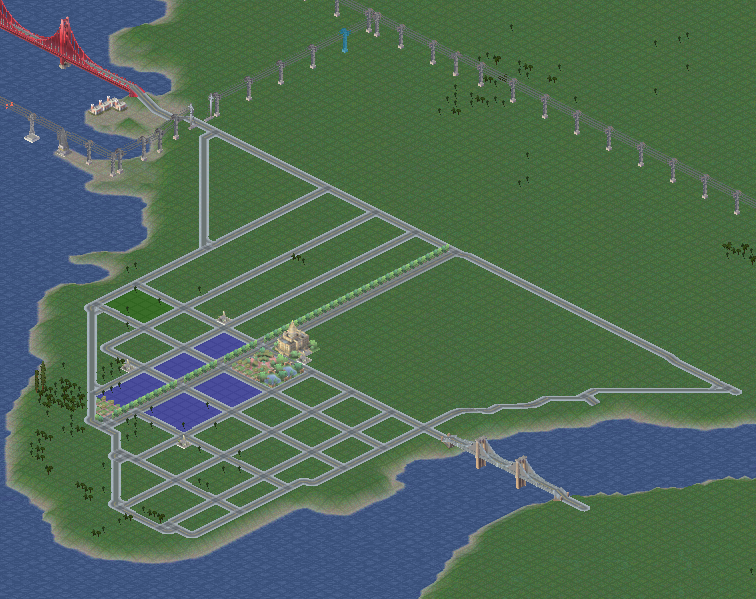
Quintillus was proud of the new development, but it had not come cheap - costing some $30,000, funded in part by a loan. Bridges were the biggest-ticket items, but land flattening, water utility relocation, and asphalt all contributed - not to mention the nice park across from City Hall.
It was a bit of a rough start, not so much for the new district, but for the old ones, as the budget ran out before enough new water pumps could be built to replace those deconstructed during the bridge construction. The four water pumps in the new area were drastically under-utilized, whereas the six plus a few towers on the old side were working 24/7.
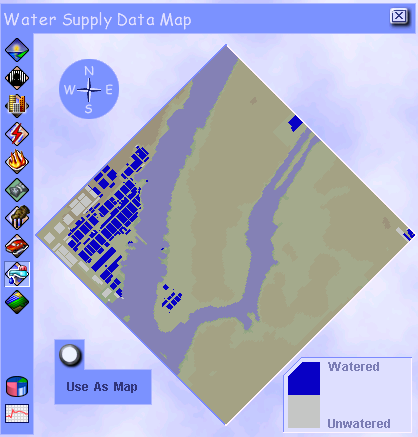
Still, the new area proved popular, especially for athletic clubs.

The govuhnuh seemed to think this area would be great for natural development, offering a geyser park.
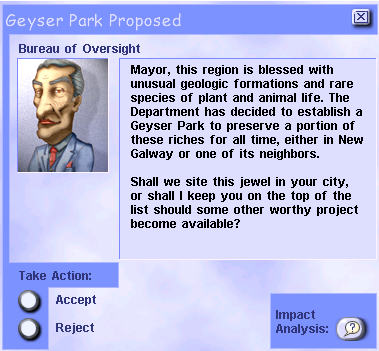
Needless to say it wouldn't be built until full water service was restored, as the voters were getting antsy about the "load shedding" going on.
What was built, however, was New Galway's first commercial skyscraper.
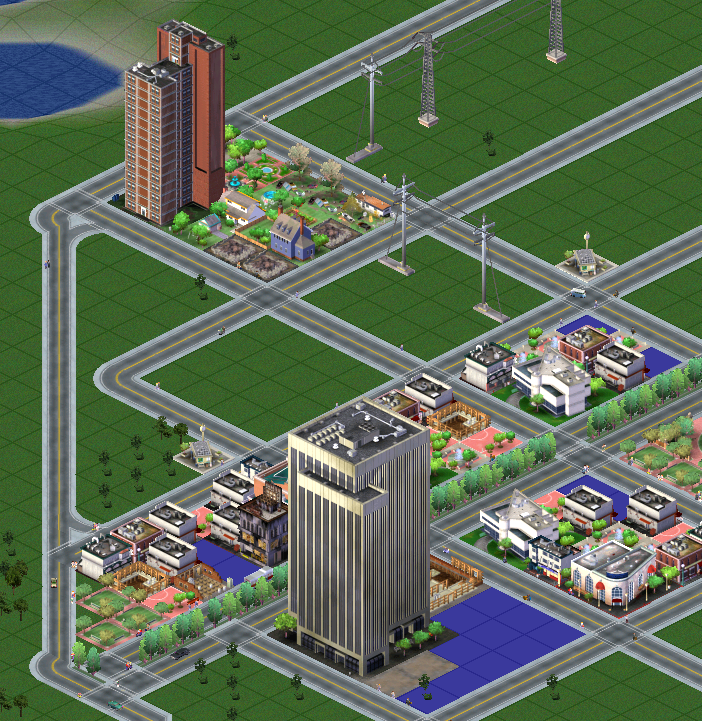
In October, the mayor was notified that the local casino and prison hadn't been paying their dues to the city since January, citing unreliable water supplies. Oops! A small loan was quickly issued so the utility work could begin.
1931's budget was spent on further infrastructure work for new commercial and residential zones in the new neighborhood, as well as a small industrial zone and preparations for a future seaport across the eastern river. The old Quintillus Industrial Zone was also expanded - and soon, higher-tech industries started testing the waters.

By the end of 1931, the population was over 90,000, and the new district had nine high-rises.
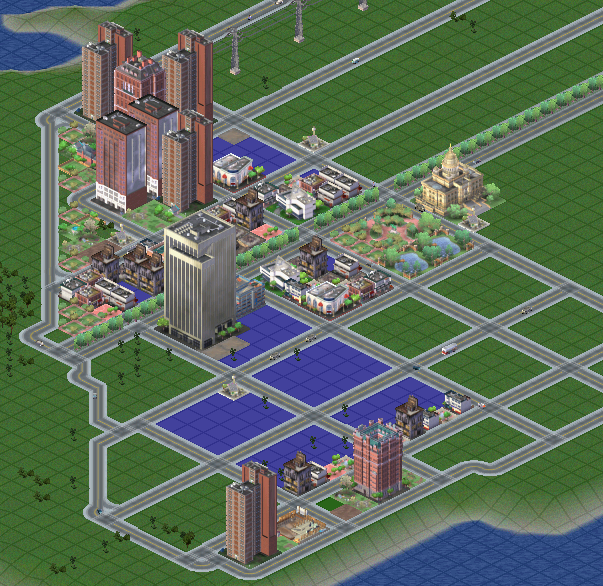
1932 saw the establishment of fire and police services in the new district, more residential zoning, more expansion of the Quintillus Industrial Park, and more omnibus routes established. It was clear that for the commercial core to develop, more non-commercial zones were needed. Property developers were even coming to City Hall to request them!
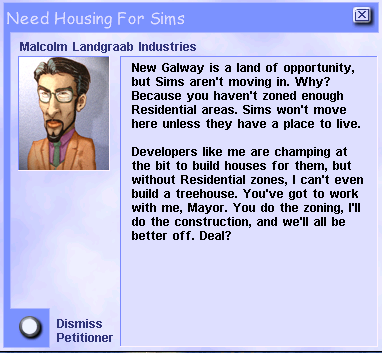
But progress was being made on that front, and the population surpassed 100,000 for the first time in May of 1932. To celebrate, the Society for the Excessively Cultured offered to build a performing arts center - free of charge!
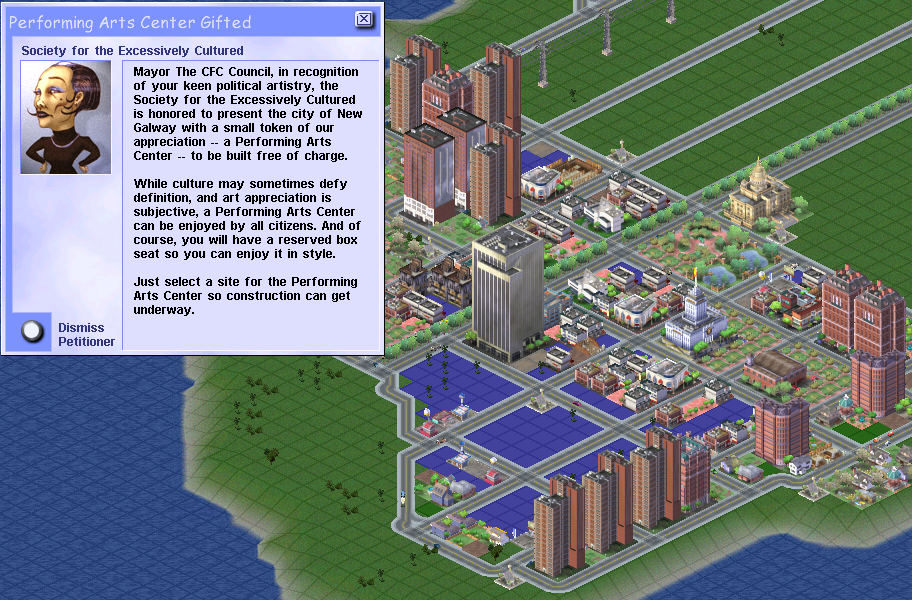
1933's budget was primarily allocated to the new City Hall district as well, although the Mayor did take steps to ensure the city's prisoners would now have clean water. The marquee project of the year was a large waterfront park at the southern end of the City Hall district.

A hospital and school were added to the area as well, and the density was now becoming enough for the commercial core to develop more completely. As for the new residential areas by the large park? They were considered the prime land in all of New Galway.
In early 1934, internal polls showed Quintillus performing well with the 35,000 to 40,000 people living in the City Hall District, but poorly with voters elsewhere, who reportedly felt ignored. Knowing how fickle New Galway voters were, Quintillus decided that perhaps the best strategy was an unorthodox one - convince non-residents to move to New Galway in time to vote on Election Day.
Thus, new areas were zoned, and a marina built near the City Hall district. Still, Quintillus thought perhaps it was wise to hedge bets, and thus spent some money on New Galway's first oil-burning power plant, appeasing those who said the amount of money being spent on importing power from Sorenville - which was meeting half of New Galway's needs - was excessive.
Some certainly approved of these actions - Landgraab Industries proposed that New Galway ought to have a fine country club.
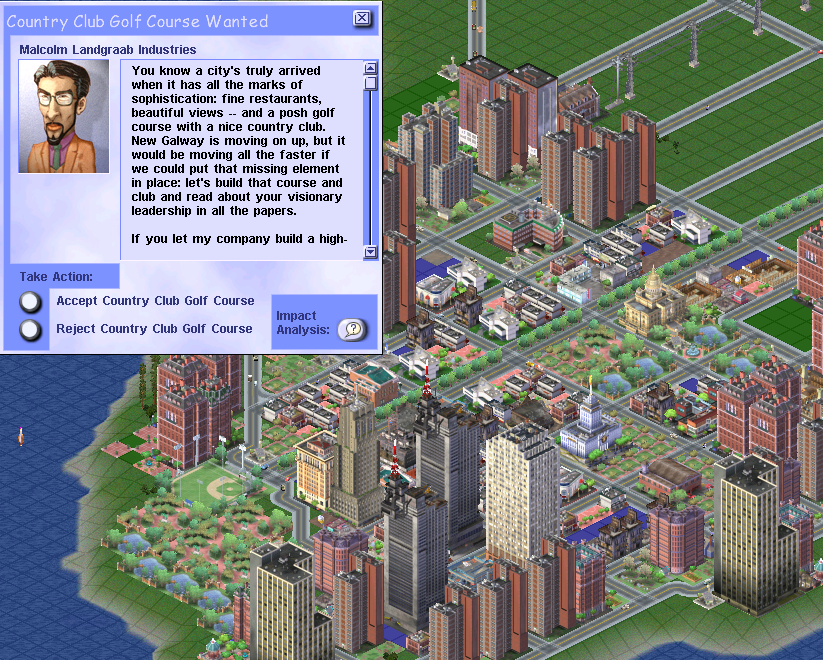
Quintillus demurred on the decision, knowing that accepting would exacerbate the "out of touch with existing residents" problem.
The gambit of having more residents move in, alas, did not work. More people moved in, but a furor erupted when the local cab drivers' association announced an increase in fares a week before Election Day, and once again control of New Galway would change. It had, however, grown considerably, and was not the same city it had been five years ago.
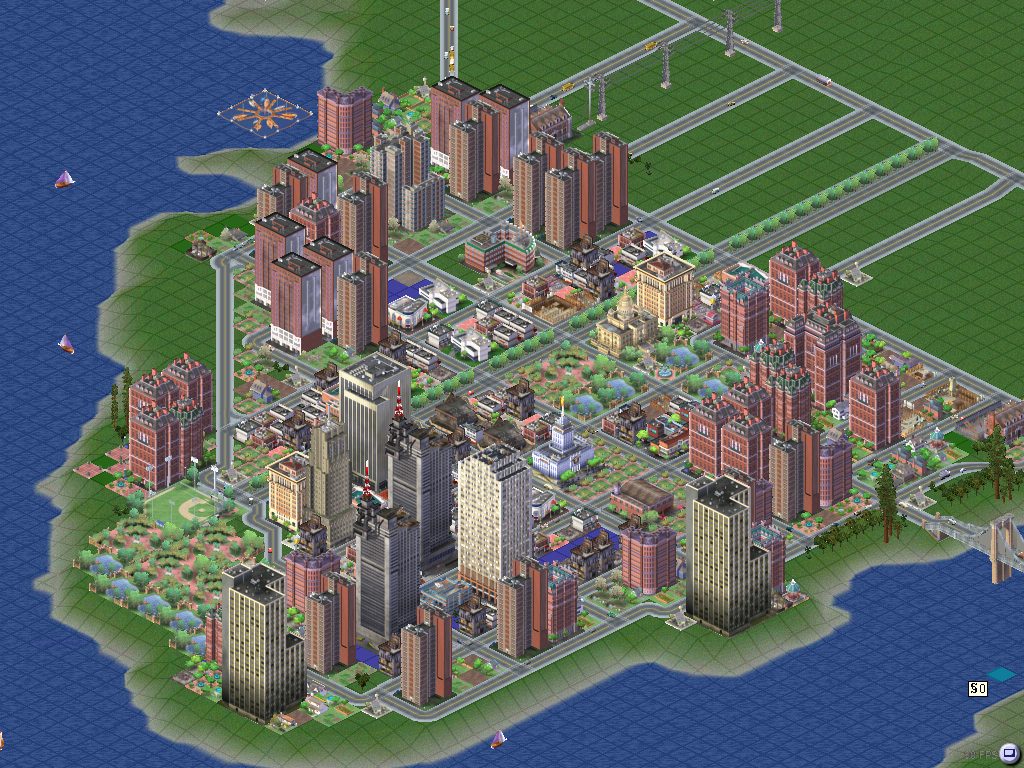
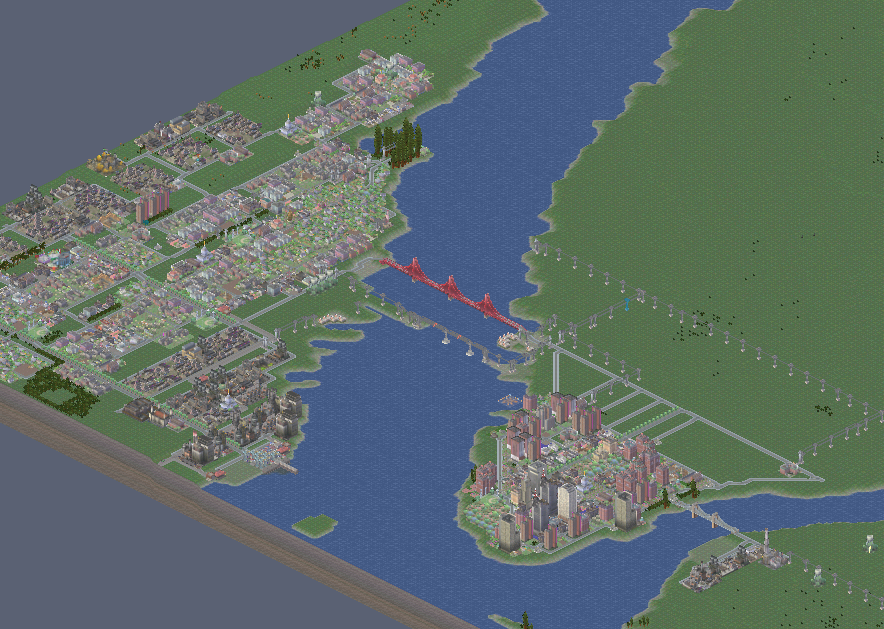
Population: 127,203 (+47,311, +59%)
Annual Surplus: $27,492 (+$11,388, +71%)
Debt: $17,800 (new)
EQ: 84 (+8)
Life Expectancy: 59 (+1)

































 .
.